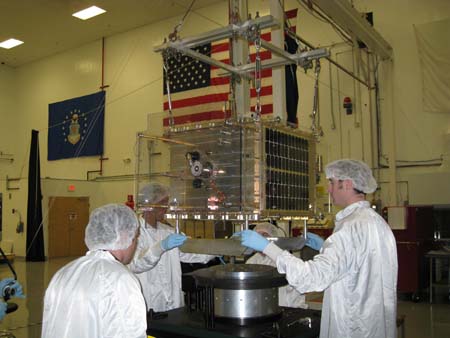Air Force  Chief Scientist Werner Dahm on Wednesday rolled out the much-anticipated Technology Horizons report that lays out the service’s science and technology priorities for the next decade and beyond. It comes after the service conducted a year-long, comprehensive review. Far from a list of “pie-in-the-sky” technologies, Dahm told reporters during a Pentagon roundtable, the report identifies efforts that will be “disproportionately valuable” to the Air Force, and could create a force that looks significantly different by 2030 than the one operating today. “This is not science fiction,” he said. Indeed, concepts in the report had to be “credibly visionary,” and many are based on efforts that have already had a significant amount of basic research done, he said. “Generation-after-next” technology efforts discussed in the report include the expansion of adaptable autonomous systems in remotely piloted vehicles, closer human-machine coupling, and building “cyber-resilient” networks capable of morphing and anticipating threats, said Dahm. Public release of the 150-page report is scheduled for next week.
Chief Scientist Werner Dahm on Wednesday rolled out the much-anticipated Technology Horizons report that lays out the service’s science and technology priorities for the next decade and beyond. It comes after the service conducted a year-long, comprehensive review. Far from a list of “pie-in-the-sky” technologies, Dahm told reporters during a Pentagon roundtable, the report identifies efforts that will be “disproportionately valuable” to the Air Force, and could create a force that looks significantly different by 2030 than the one operating today. “This is not science fiction,” he said. Indeed, concepts in the report had to be “credibly visionary,” and many are based on efforts that have already had a significant amount of basic research done, he said. “Generation-after-next” technology efforts discussed in the report include the expansion of adaptable autonomous systems in remotely piloted vehicles, closer human-machine coupling, and building “cyber-resilient” networks capable of morphing and anticipating threats, said Dahm. Public release of the 150-page report is scheduled for next week.
F-35As from the Vermont Air National Guard have deployed to Puerto Rico in recent days, continuing a major buildup of U.S. Air Force assets in Latin America aimed at combating drug trafficking and pressuring the regime of Venezuelan leader Nicolas Maduro.

